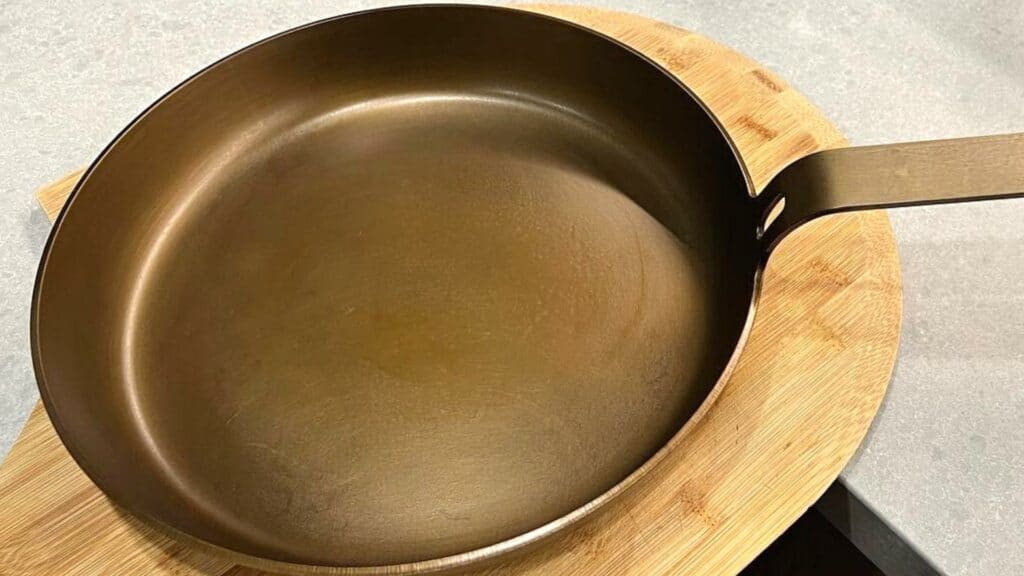Short Answer: Generally all you need is just hot water, a bit of soap and a chainmail scrubber (this one from Amazon) . If you don’t have a chainmail scrubber, then the rough side of a sponge or steel wool ball works fine too.
Carbon steel cookware can seem a bit intimidating if you just started dabbling with it. But I promise you, it’s effortless once you get the hang of it. I’ve seen countless people confused on the internet because they don’t know how to clean their pans and skillets anymore. Everyone is so used to the carefree ways of teflon.
And I don’t blame them, I’ve used non-stick pans for the majority of my life because of their convenience, both in cooking and cleaning. Since nothing sticks, the cleanup is usually much more straightforward. You can’t say the same with carbon steel cookware.
So in this article, I’m going to show you the proper steps to clean your carbon steel pan. I’ve been using mine for around 2.5 years now, I’ve cooked lots of food and made plenty of messes. Hopefully, some of these tips will help you, let’s get started.
How To Clean Your Carbon Steel After Cooking
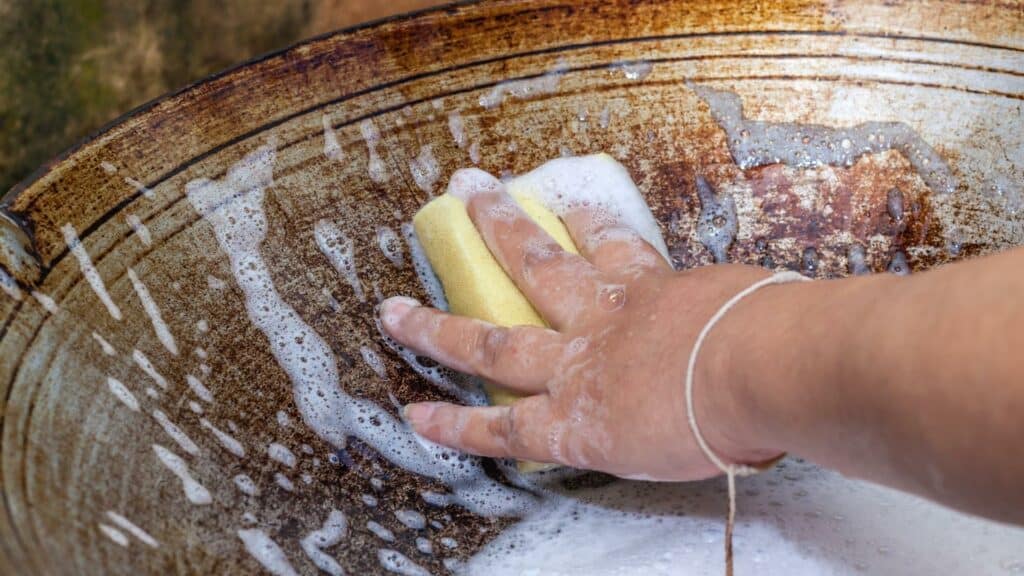
First, don’t soak it in water and don’t put it in the dishwasher. Hand wash only. Not only it’s faster, more ecological, but it also allows you to carefully check the condition of your pan.
And when you hand wash it, remember to always rinse your pan using hot water, if you don’t, you could shock your pan, and it might warp. Which is a bit trickier to fix and with a little attention, you can easily prevent it.
Here are a few examples to tell you exactly how to clean your pan based on what kind of mess remains on your pan.
If It’s Not Messy At All

For example, when you just finished making a simple omelette. Usually, you don’t need to do much for this. Just rinse with hot water, wipe it with a bit of soap and a sponge, and you should be good.
This typically works for most things that don’t stick, but instead just leave a little residue from the fat you’ve used to cook (like butter or oil). It’s easy and straightforward to clean in this situation.
Sticky Bits That Don’t Simply Wipe Off
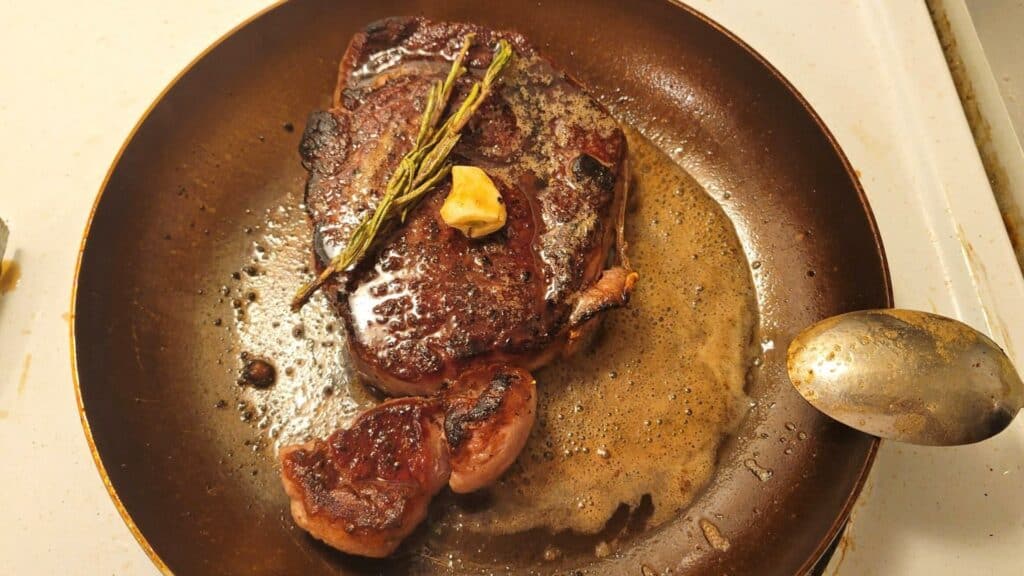
This happens when you cook something that caramelizes, like ground beef. At first, it’s nice, and it’s not sticking, but once all the water evaporates, all the little bits start browning and some stick to the surface. Which is totally ok, we often look forward to those brown bits because those are the ones that have all the flavor.
Now to wipe off this sticky mess, all you have to do is grab some hot water and pour some into your pan. Then you start scrubbing and getting those bits of stuck food off the surface with the help of the water, with a flat wooden spoon, metal spatula, or why not I’ve even used a normal spoon. It doesn’t really matter, as long as you can scrub with it.
What we’re doing is basically deglazing, which is typically done to make a pan sauce. However, this time is just to get your pan nice and clean.
Big Mess – Stuff That Just Won’t Come Off
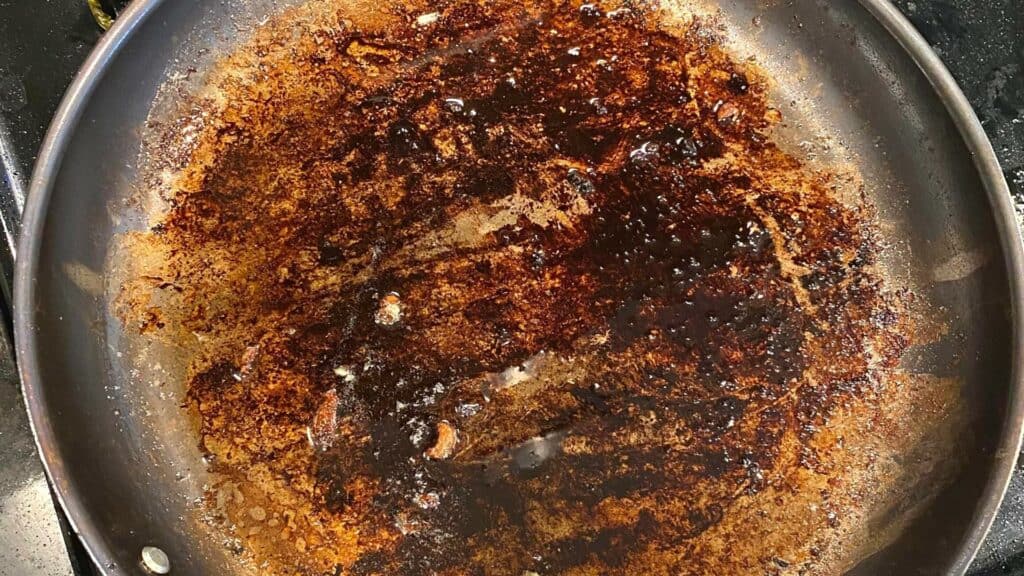
I find that really fatty foods, like a steak or bacon, they leave this oily film of grease on the surface even when you wipe the pan completely, and it seems clean. You can feel it with your fingers.
That’s when I use my chainmail scrubber (from Amazon) or if you don’t have one, you could also use steel wool. Just pour some soap and start lightly scrubbing the surface all over, until that greasy film is not there anymore. You might need to do it a couple of times to get it all off.
This also works for a big mess – for example a failed frittata that gets stuck in the center (ask me how I know), or if you accidentally burned a filet of fish.
I strongly recommend getting yourself a stainless steel chainmail scrubber (Amazon). It keeps the surface of your carbon steel spotless and smooth, which is what you want.
Drying and Maintenance
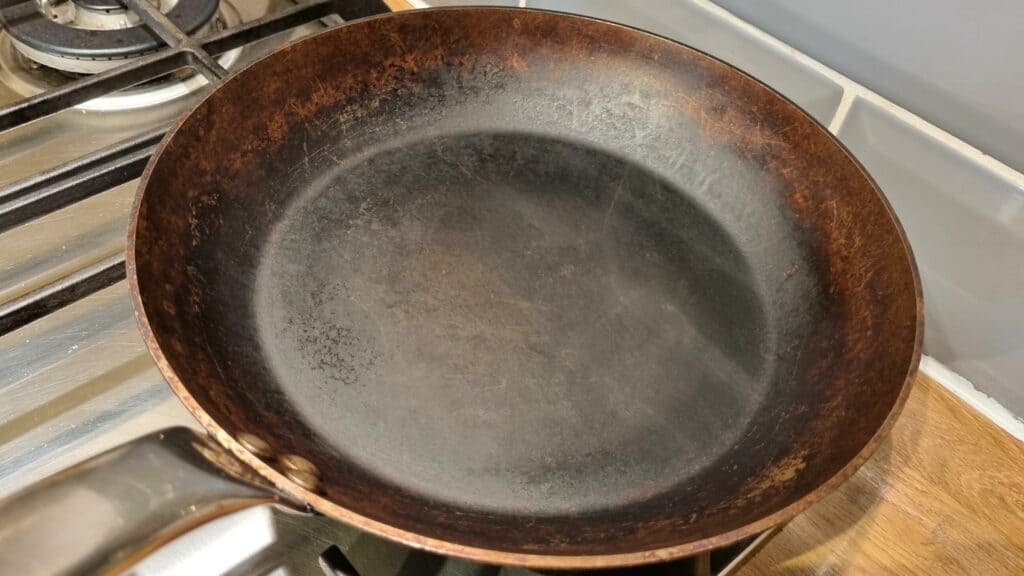
Now, regardless of what kind of mess you’ve cleaned off your pan, the last step is always the same. You need to dry off your pan on a medium heat, to make sure all the water has evaporated. Otherwise, you might not see a little water on your pan, and it might rust.
After it’s nice and dry, look at the surface of the pan and check if it needs a touch up. If it looks good, then you can put it aside and let it cool.
If it looks like it requires a little maintenance, then after it’s dry, apply a really tiny amount of oil. I’m talking the smallest amount. What I do is cover the opening of my oil bottle with a paper towel and just tilt the bottle, that will leave a bit of oil on the paper towel. One or two of those and that’s all the oil you need to maintain your carbon steel pan.
With that, I wipe the pan continuously until it is spread really evenly on the surface. Then I let the pan smoke for 1-2 minutes and turn off the fire.
Can You Really Use Soap To Clean a Carbon Steel Pan?
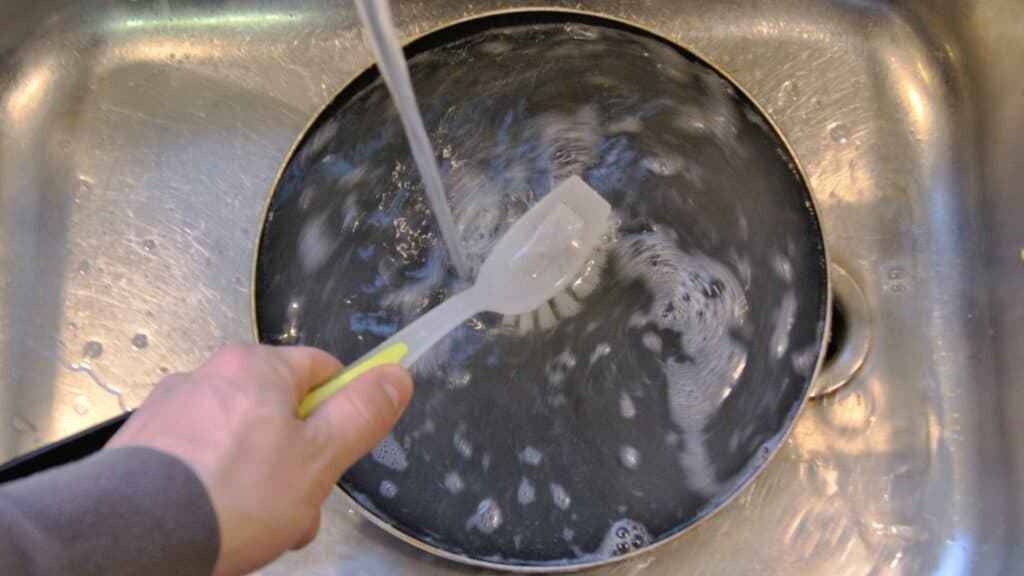
Yes, you can. This seems to be a recurring question, mostly from people that have used a cast iron skillet. The reason you can use soap is because modern soap doesn’t contain Lye, which is what ruins your pan seasoning.
Nowadays, there are no problems with using soap on carbon steel. Not only it would keep your pan clean, but it will also keep the surface from smelling of strong food odors and giving it to other foods you’ll cook in the future, for example, after you’ve cooked a fish.
Conclusion
I know I’ve explained in detail the process, and it might seem a lot to do, but it’s easier than you think. The whole cleaning and drying takes less than 5 minutes. Around 7 minutes if you also do a maintenance seasoning.
The first times you might not like doing this whole cleaning and drying thing right after you just finished cooking, I find it quite pleasant, almost meditative. But you might differ. I hope this helped you! Good luck!
